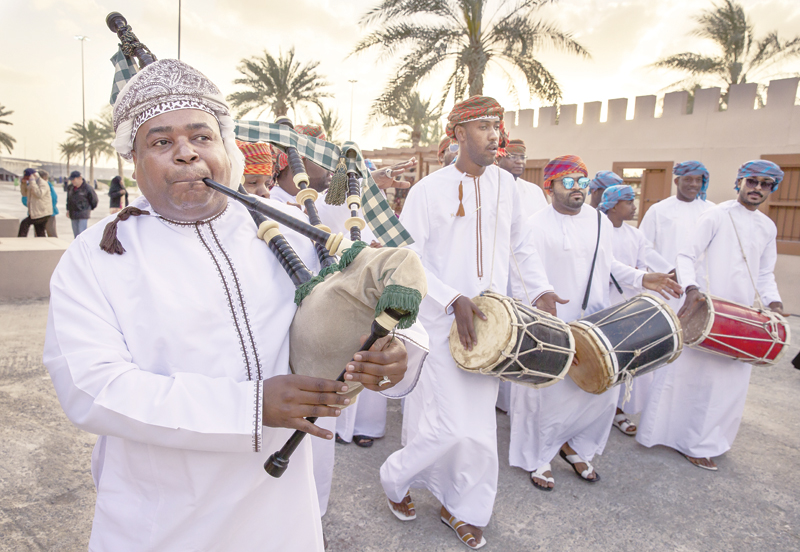

In every celebration, music, songs and dance are inevitable in Oman. Depending on the nature of the occasion, the genre and style differ. While farmers have their own songs as sailors do during all their activities such as the casting or hauling of nets, for other occasions like birth, circumcision, marriage, religious celebrations, national festivals, there are different folk music and dances.

The musical culture of Oman, which has numerous varieties is the reflection of its people’s multi-ethnic origin.
Traditional music marks all the stages in the life of an Omani. It has been strongly affected by the Sultanate’s coastal location, with Omani sailors’ interaction with many countries like Egypt, Tanzania, Saudi Arabia and Iran and bringing back music from those places.
Omani folk dance is very much prevalent in Omani wedding celebrations when different forms of music and dances are involved bringing to the fore the cultural richness of Oman. The songs and movements differ from region to region.
Although marriage celebrations have become more sophisticated in the recent years as the urban population bids to bring an international touch with modernity, they are still grand affairs steeped in customs, rituals and traditions.
Ahmed al Saidi is from Saham. While recollecting his marriage celebrations a couple of months back, he says, in Oman, marriage is not just about the wedding ceremony.

“Even the engagement takes quite a bit of preparation. From the time the families of the bride and bridegroom agree on the marriage, the celebrations start”, Ahmed who works in the Ministry of Heritage says.
The duration between the proposal and the day of wedding is considered the engagement period. Each step in the process is cause for celebration, with even the application of the henna,
which is considered as a symbol
of joy and jubilation and celebrated grandly.
According to him, celebrations of wedding take place at both the houses, where each of the families celebrate before the groom and his family leave their house to come and pick up the bride.
At each of the homes the men celebrate outside while women have their revelries inside the house.
“There has been music, dancing and an abundance of food. Outside the house men dance with wooden canes called assas and are dressed in dishdashas and Omani Khanjars.
But for Ahmed, a Bedouin musical and dance session that his friends have arranged to celebrate his marriage.
Called as Al Bar’ah, the dance form is practiced in Dhofar and performed in a half circle formed by ten to thirty men and women.
“It takes the form of a warlike dance performed to drums and the chanting of poetry in tribal dialect”.
The steps of the dancers are not complicated, but coordination with other performers and the music requires considerable skill.
As they chant and clap, two male dancers holding ‘khanjars’ perform codified dance movements, brandishing their daggers above shoulder level.
Ahmed says, “the tradition represents the chivalric spirit, strength, courage, generosity and hospitality associated with Bedouins”.
The dance also emphasises poetic themes of love and flirtation. Al Bar’ah has many practitioners from Dhofar, who contribute to maintaining and transmitting its poetic variety and practice.
SAMUEL KUTTY
Oman Observer is now on the WhatsApp channel. Click here



